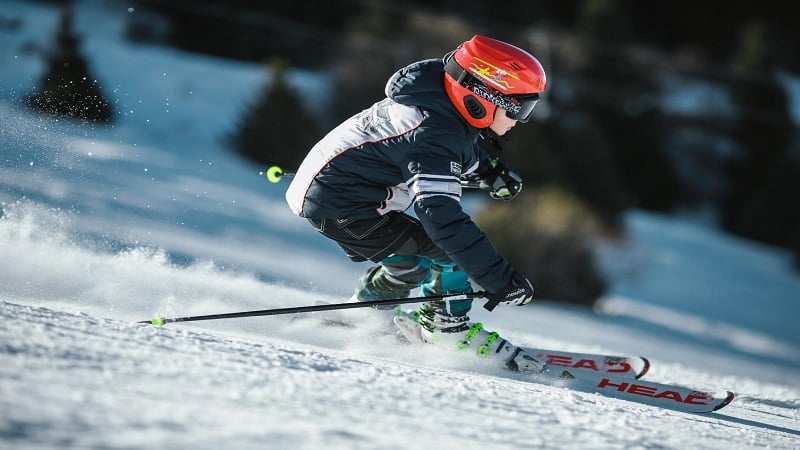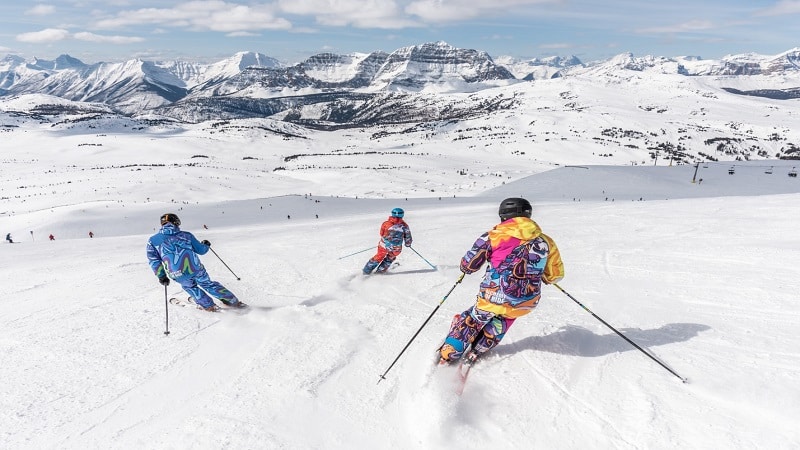Skiing is one of those sports where safety meets style, and nothing embodies that balance better than a good ski helmet. Whether you’re carving through fresh powder or tackling icy slopes, a helmet is essential for protecting your head and boosting your confidence on the mountain. But with so many options out there, it can be tough to decide between a budget-friendly choice and a premium model.

I’ve often wondered if spending more on a high-end helmet is really worth it or if a more affordable option can do the trick just as well. Both categories have their perks and drawbacks, and finding the right fit depends on what matters most to you—comfort, features, durability, or price. Let’s dive into what sets budget and premium ski helmets apart so you can hit the slopes with the perfect balance of safety and value.
Understanding Ski Helmets
As someone who spends countless days on the slopes, I know a good ski helmet isn’t just gear—it’s essential for safety and performance. Whether you’re cruising groomed trails or tackling backcountry powder, the right helmet makes all the difference.
Importance Of Wearing A Ski Helmet
Safety stands out as the main reason for wearing a ski helmet. It reduces the risk of head injuries during falls or collisions. Modern helmets are designed to absorb impact effectively, offering peace of mind while pushing limits on challenging terrain.
Warmth is another key benefit. Helmets provide insulation against cold winds and snowy conditions, keeping you comfortable even on freezing days. Swapping a beanie for a helmet doesn’t compromise warmth—it enhances it, thanks to advanced materials and snug fits.
Visibility improves, too. Many helmets work seamlessly with ski goggles, reducing fogging and glare. Proper helmet-goggle integration means fewer distractions and better focus on the descent.
Key Features Of Ski Helmets
Impact protection is non-negotiable. Helmets often feature EPS foam for shock absorption and increasingly include MIPS technology, which reduces rotational forces during angled impacts.
Ventilation systems vary widely. Budget models might offer fixed vents, while premium options let you adjust airflow on the go. Good ventilation prevents sweating and keeps you comfortable throughout the day.
Fit personalization makes all the difference in comfort. Many helmets have adjustable dials or BOA systems to fine-tune the fit. Poorly fitting helmets are distracting and unsafe.
Durability directly ties to the quality of materials. Higher-end helmets use robust shells and lightweight construction for extended use without compromising safety. Budget helmets might prioritize affordability over lifespan.
Additional features include integrated audio systems, removable liners, and built-in visors, with premium models offering more advanced extras. These add-ons enhance convenience and elevate the skiing experience.
Budget Ski Helmets
Budget ski helmets offer essential protection at a lower price point, making them a practical choice for beginners or those skiing less frequently. While they lack some premium features, they still meet safety standards for enjoyable and secure rides down the slopes.
Pros Of Budget Ski Helmets
- Affordability: Budget helmets typically range from $40 to $80, which is significantly less than premium models. This makes them accessible to skiers on a tighter budget.
- Safety Compliance: Most budget helmets meet safety certifications such as ASTM F2040 or CE EN1077. They’re designed to absorb impacts and reduce injury risks during minor collisions.
- Basic Comfort Features: Many models include basic airflow vents and adjustable fit systems. For instance, helmets like the Smith Holt or Giro Ledge have sufficient padding for decent comfort on the slopes.
- Lightweight Design: Budget helmets, often made of in-mold construction materials, feel less bulky, making them ideal for casual skiers.
Cons Of Budget Ski Helmets
- Limited Advanced Features: Features like MIPS technology, adjustable ventilation, or integrated audio systems are rare in this category. For example, you won’t typically find a helmet with a built-in speaker or goggles-compatible vents.
- Durability Concerns: They often use lower-cost materials which may result in shorter lifespans. Frequent skiers might notice wear faster compared to premium helmets.
- Fit And Finish: The fit might not be as customizable, and liners may feel less plush. Helmets like the Anon Raider provide value but may lack the premium feel of higher-end options.
- Basic Aesthetics: Designs are simple with fewer color and style variations, focusing more on functionality.
Best Budget Ski Helmet Options
- Giro Ledge: Lightweight and durable, featuring removable ear pads and compatibility with audio systems, this helmet is great for casual use.
- Smith Holt: Known for its simple design and efficient impact protection, it balances affordability and quality.
- Anon Raider 2.0: Offers a classic skate-inspired look and tough Endure-Shell construction, making it reliable for occasional skiers.
- Wildhorn Drift: Compact but comfortable, this model is a budget-friendly option endorsed by the U.S. Ski Team.
These options ensure safety while keeping costs down. When picking a budget helmet, I always suggest confirming it meets safety standards and fits snugly for maximum protection.
Premium Ski Helmets
Premium ski helmets elevate the skiing experience with advanced safety, comfort, and convenience features. As someone passionate about winter sports, I know the value of gear that performs at the highest level on the slopes.
Pros Of Premium Ski Helmets
Premium helmets offer exceptional protection by integrating technologies like MIPS (Multi-Directional Impact Protection System) and hybrid shell designs. These features reduce rotational forces during impacts and enhance durability.
Enhanced comfort is another standout benefit. High-end models often feature advanced ventilation systems, adjustable airflow controls, and plush liners. These elements maintain comfort in varying weather conditions, whether on icy mornings or under the midday sun.
They often provide superior fit with adjustable systems like BOA dials or multi-size liners. A perfect fit boosts safety and reduces fatigue during long ski days.
Additional features amplify the skiing experience. Integrated audio systems, goggle clips, removable liners, and anti-fog compatibility with goggles are common in premium options. These extras make skiing more functional and enjoyable.
Cons Of Premium Ski Helmets
A higher cost is the main drawback. Premium helmets can range from $150 to $500, depending on the brand and features. This investment might be steep for casual skiers or those on a tight budget.
They can feel heavier than budget models because of added features and materials, which could be noticeable after extensive wear on the slopes.
Some advanced features may not appeal to everyone. For example, a beginner might not need an integrated audio system or adjustable vents, making such helmets less practical for them.
Popular Premium Ski Helmet Choices
Several premium helmets stand out in terms of quality and design. The Smith Vantage offers Aerocore construction with Koroyd for unmatched impact absorption and airflow.
The POC Obex BC MIPS provides enhanced backcountry safety with MIPS tech and RECCO reflectors for easier rescue location.
For audiophiles, the Giro Range MIPS includes built-in compatibility with audio systems and boasts an adaptive fit with Conform Fit technology.
The Salomon Driver Prime Sigma features a visor-style design with SIGMA lens technology for improved color contrast and crisp vision.
These options combine style with top-tier performance, making them reliable choices for dedicated skiers like me.
Comparing Budget Vs. Premium Ski Helmets
As someone who’s been passionate about snow sports for years, I’ve come to realize how much the right ski helmet can impact both safety and enjoyment on the slopes. Budget and premium helmets differ in key areas, influencing which option suits specific skiing needs.
Differences In Materials And Durability
Budget helmets typically use ABS or lightweight polycarbonate shells paired with EPS foam for impact absorption. While these materials meet safety standards, they might not hold up as well under frequent use or harsh conditions. For instance, a budget helmet may show wear after one intensive skiing season.
Premium helmets often combine hybrid shell designs, incorporating both ABS and in-mold constructions for enhanced durability and reduced weight. Reinforced materials like carbon fiber or aramid layers improve resistance to damage. My Salomon Driver Prime has survived multiple seasons without significant wear—something I couldn’t say about my first budget helmet.
Comfort And Fit Comparison
Budget helmets provide functional padding and an adjustable strap system but lack the refinement of premium models. While they offer adequate comfort for shorter sessions, extended use might result in minor discomfort due to limited ventilation or a less tailored fit.
Premium helmets excel with intuitive adjustment systems, plush liners, and multi-zone ventilation controls. The Giro Range MIPS, for example, molds snugly around my head using its conforming fit system, ensuring all-day comfort regardless of temperature changes. Some even include removable liners that adapt to changing conditions, making them versatile across seasons.
Safety Features And Technology
Budget helmets prioritize core safety, featuring impact-absorbing EPS foam and, occasionally, basic MIPS technology to reduce rotational forces during falls. They meet essential protection standards, making them reliable for casual skiers or those just starting.
Premium helmets often raise the bar with advanced safety features. Many incorporate cutting-edge MIPS designs alongside additional layers like Koroyd, which dissipates impact energy more effectively. POC’s Obex BC MIPS is a great example, combining premium safety measures that give me peace of mind on challenging terrain or at higher speeds.
Price-Performance Ratio
The lower cost of budget helmets makes them ideal for beginners or those skiing a few times each year. Options like the Smith Holt or Anon Raider 2.0 provide solid value by focusing on essentials rather than extra features.
Premium helmets deliver a better overall experience but come with a significantly higher price tag, ranging from $150 to $500. I personally find the investment worthwhile as a frequent skier seeking top-level protection, comfort, and convenience. For those hitting the slopes regularly, helmets like the Smith Vantage justify their price through durability and added features, ultimately enhancing performance.
Conclusion
Choosing between a budget and a premium ski helmet really comes down to your personal needs, preferences, and how often you hit the slopes. Both options can provide the protection you need, but the added features and durability of premium helmets might be worth the investment if you’re a frequent skier or value extra comfort and convenience.
For beginners or those skiing occasionally, a budget helmet can be a smart and practical choice without compromising safety. Whatever you decide, the most important thing is finding a helmet that fits well, meets safety standards, and makes you feel confident while skiing. Stay safe and enjoy the slopes!











